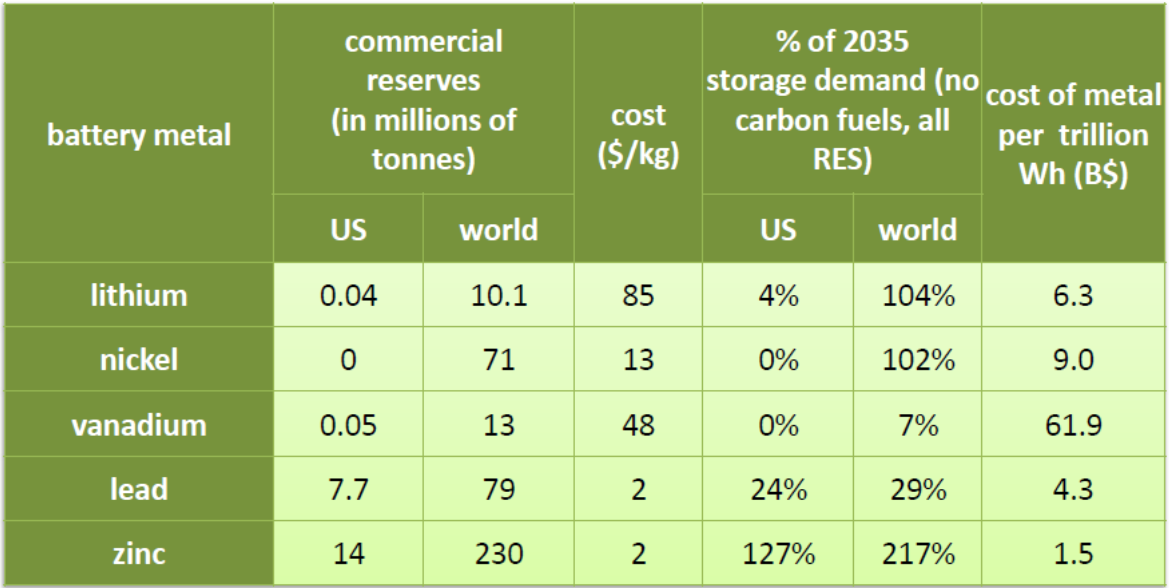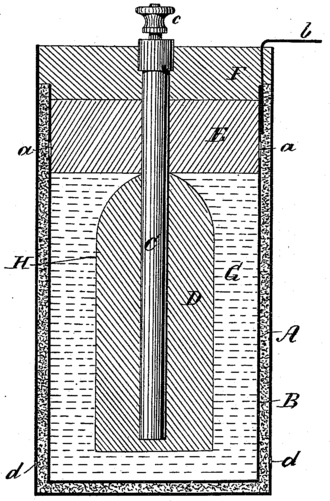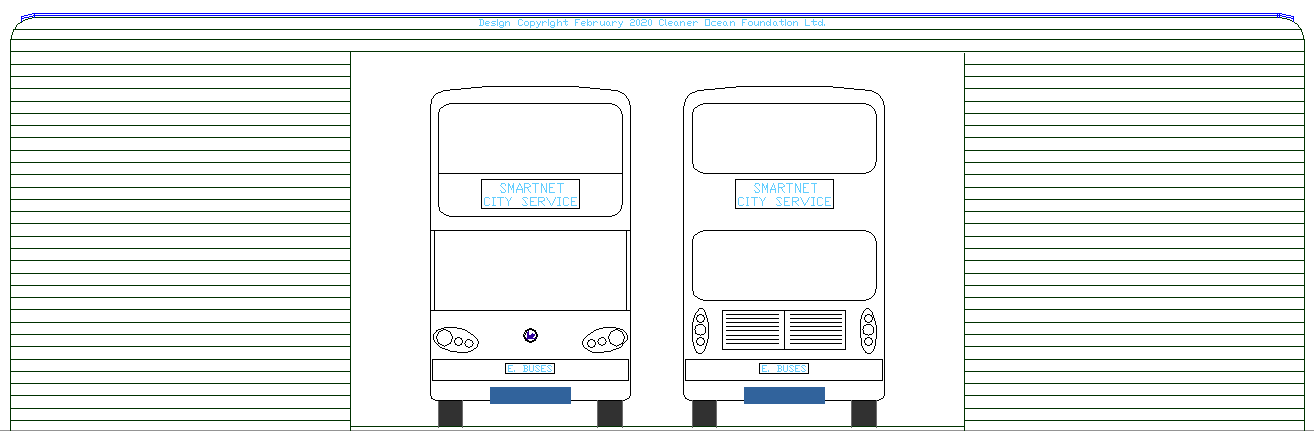|

PROSPECTS
- Metal-air batteries, in particular zinc-air batteries, can deliver larger energy density at lower production cost than most currently available battery technologies. The high energy density is associated with the use of oxygen as the active material which is not confined within the batteries. Although the technology of zinc-air batteries has matured, their further development has been hindered for various technical reasons. The most notable challenge is their short cycle life, which is critically linked to the lack of low-cost and robust bifunctional catalysts for the oxygen reduction reaction (ORR) and the oxygen evolution
(OER).
Metallic zinc could be used as an alternative fuel for vehicles, either in a zinc–air battery or to generate hydrogen near the point of use. Zinc's characteristics have motivated considerable interest as an energy source for electric vehicles. Gulf General Atomic demonstrated a 20 kW vehicle battery. General Motors conducted tests in the 1970s. Neither project led to a commercial product.
In addition to liquid, pellets could be formed that are small enough to pump. Fuel cells using pellets would be able to quickly replace zinc-oxide with fresh zinc metal. The spent material can be recycled. The zinc–air cell is a primary cell (non-rechargeable); recycling is required to reclaim the zinc; much more energy is required to reclaim the zinc than is usable in a vehicle.
One advantage of utilizing zinc–air batteries for vehicle propulsion is that earth's supply of zinc metal is 100 times greater than that of lithium, per unit of battery energy. Current yearly global zinc production is sufficient to produce enough zinc–air batteries to power over one billion electric vehicles, whereas current
lithium production is only sufficient to produce ten million lithium-ion powered vehicles. Approximately 35% of the world's supply, or 1.8 gigatons of zinc reserves are in the United States, whereas the U.S. holds only 0.38% of known lithium reserves.
Initial rechargeable zinc air batteries, developed for use in vehicles, were used for buses in Singapore. Their developer, Miro Zorič, chose zinc air chemistry specifically due to zinc air battery production requiring only abundant raw materials without requiring rare earth materials. When used to power vehicular AC (induction) drive trains, this would allow global road transport electrification, without destabilizing global supply chains or cause adverse raw material bottlenecks. 
GRID
STORAGE
The Eos Energy System battery is about half the size of a shipping container and provides 1 MWh of storage. Con Edison, National Grid, Enel and GDF SUEZ began testing the battery for grid storage. Con Edison and City University of New York are testing a zinc-based battery from Urban Electric Power as part of a New York State Energy Research and Development Authority program. Eos projects that the cost of storing electricity with such EOS batteries is US$160/kWh and that it will provide electricity cheaper than a new natural-gas peaking power station. Other battery technologies range from $400 to about $1,000 a kilowatt-hour. ENERGY CENTRAL FEBRUARY 2018
A technological revolution is under way in the battery energy storage industry. Along with news headlines, lithium-ion batteries have come to dominate the fledgling market for new, stationary battery energy storage. A global, $50 billion market, conventional lead-acid batteries still predominate overall, however; while a variety of alternatives, of differing chemistry, as well as systems technology, vie for their share of a fast growing market.
Agnostic when it comes to battery chemistry and technology, the National Alliance for Advanced Transportation Batteries (NAATBatt) International is keen to fuel innovation and growth across the sector. It also believes that it's time promising alternatives to lithium-ion battery technology got their due. Among these, zinc-based batteries may be on the cusp of a commercial breakthrough.
In part one of this two-part series, NAATBatt International executive director Jim Greenberger highlighted growing use of zinc-based battery energy storage across a broad front, one that encompasses solar and renewables integration, energy-intensive commercial/industrial facilities, such as data centers, and transportation, which runs the gamut, from mass, public transit to scooters, motorcycles, cars, trucks and the variety of smaller
electric vehicles used in warehouses, recreational venues, such as golf courses, and increasingly for short-range trips around a town or village.
This article includes quotes from Jim Greenberger and Randy Moore, president and CEO of ZAF Energy Systems, a founding member of NAATBatt International's newly created Zinc Committee.
Lithium-ion battery manufacturers and battery energy storage systems integrators have done a great job getting the word out regarding technological innovations, falling costs and the broad range of advantages and benefits new applications of lithium-ion battery energy storage systems are now able to provide in the energy services sector. “You can hardly pick up a newspaper without reading about lithium-ion batteries. They're a very powerful, novel tool for grid, commercial/industrial and consumer energy applications, but they are really just a fraction of the market,” Greenberger told Energy Central.
“These new innovations vastly expand what we can do with battery-stored energy in terms of new applications, many of them based on zinc. Zinc-based battery storage is actually an older technology, but we're really just figuring out new ways of making use of zinc battery chemistries, as well as lead acid.”
Creation of the Zinc Committee “reflects a real need in the marketplace,” according to Greenberger. A developer of advanced zinc battery energy storage technology and systems, ZAF Energy Systems agrees. The Columbia, Montana-based company joined with NAATBatt International in launching the Zinc Committee.
All told, some 100 organizations across the zinc battery energy storage industry value chain have signed on as NAATBatt international Zinc Committee members. They encompass every facet of the evolving industry ecosystem, from the mining of zinc ores to chemical refiners and onwards to battery manufacturers and end-users that are deploying zinc battery energy storage systems, ZAF CEO Randy Moore said during an interview.
“We want to get the story out and promote zinc-based batteries as an alternative to lithium-ion and lead-acid batteries in a coordinated fashion,” Moore explained. Founding Zinc Committee members are in the midst of working through the nascent stage of establishing the committee – hashing out its strategic goals and plans, as well as it organizational structure, processes and budget, Greenberger continued.
Overcoming longstanding barriers
“Nickel-zinc is an older technology, but the life-cycle problem allowed lead-acid to become the battery chemistry of choice,” Greenberger recounted. That problem has been solved.
Moreover, “there have been some real breakthroughs in zinc batteries that have largely been overlooked, even by industry. That's been
ground-shaking and accounts for the emergence of companies such as ZAF.”
Zinc battery technology developers have resolved the issues of hydrogen dry-out by sealing. Furthermore, they've overcome the problems of hydrogen dry-out, zinc migration and dendrite growth by making structural adjustments and mixing additives into zinc battery
electrolyte solutions, Moore explained.
Particularly notable in terms of energy metrics and overall performance, today's zinc-based battery systems exceed their lead-acid counterparts and rival lithium-ion battery systems across a growing range of mobile and stationary applications, according to the pair. Furthermore, they're less expensive, safer and more environmentally friendly, Moore highlighted.
The main market for ZAF Energy Systems' nickel-zinc and zinc-air battery energy storage technology is as a replacement for lead-acid battery systems. That extends from rechargeable batteries that power all sorts of electrical and electronic devices, to grid-scale, stationary energy storage systems.
“You might need four lead-acid batteries at a cost of $200 each to run a golf cart, for example. With the same form factor, a nickel zinc battery would cost around $300, but instead of four, you would need just two, so it's a cheaper solution, and one that reduces the footprint and weight of the battery and the product in addition,” Moore said.
In terms of applications in the auto sector, “If you want to go 0-60 in 0.7 seconds, you want a lithium-cobalt battery, but if you drive a [Chevy] Volt or
[Nissan] Leaf, a nickel metal hydride or lithium iron phosphate battery pack is economic today,” Moore elaborated.
“Nickel-iron and nickel-zinc batteries can go thousands of cycles, but they are much less energy-dense. Nickel-zinc batteries, however, are about twice as energy-dense as lead-acid and almost as energy dense as lithium-iron-phosphate batteries, though not nearly as energy-dense as lithium-cobalt. And they are cost-competitive today.”
Zinc batteries and “solar plus storage”
Greenberger brought zinc-based battery energy storage's prospects in the fast growing “solar plus storage” market to the fore. “Almost everyone that's working on renewables is considering coupling their energy generation systems with battery storage to smooth out or shift solar or wind power output.”
Lithium ion battery manufacturers have gone a long way towards addressing the safety issues revolving around installations, particularly in the
transportation and residential segments of the market, Greenberger noted. Some are still concerned, however. “Some safety issues associated with lithium-ion battery storage systems remain, particularly in the residential energy storage area. The New York Fire Dept. (NYFD), for example, has not yet approved lithium-ion batteries for residential energy storage applications,” he pointed out.
“Nickel-zinc battery energy storage is the next level up in terms of energy density and the next best option given safety considerations and constraints.” Lead-acid battery systems can be found at many smaller scale “solar plus storage,” as well as diesel-fueled and hybrid solar-diesel, sites, Moore continued. “Nickel-zinc is a direct replacement for lead-acid batteries anywhere they are used,” he said. “They have the same form factor but you need half the battery to accomplish the same amount of work.”
Zinc-air batteries may be the ultimate in terms of overall performance and low cost. Zinc-air batteries are not rechargeable, at least at present, however. “Some people are working on that, but so far the life cycle is maybe 50 full cycles. You really need something like 500.
“Once those problems are solved, zinc-air could be a direct replacement for lithium-ion. And not just zinc-air, but any metal in combination with air – lithium-air batteries would have an advantage because they would not require cobalt.”
That said, zinc-air batteries are very limited when it comes to commercial applications, however. Non-rechargeable, they're used mostly in hearing aids, which are disposed of when the batteries run down. “They only last about a month because air contaminates the electrolyte, which kills the battery,” Moore explained. 
NON
RECHARGEABLE PRIMARY CELLS
Large zinc–air batteries, with capacities up to 2,000 ampere–hours per cell, are used to power navigation instruments and marker lights, oceanographic experiments and railway signals.
Primary cells are made in button format to about 1 Ah. Prismatic shapes for portable devices are manufactured with capacities between 5 and 30 Ah. Hybrid cell cathodes include manganese dioxide to allow high peak currents.
Button cells are highly effective, but it is difficult to extend the same construction to larger sizes due to air diffusion performance, heat dissipation, and leakage problems. Prismatic and cylindrical cell designs address these problems. Stacking prismatic cells requires air channels in the battery and may require a fan to force air through the stack.
SECONDARY (rechargeable) CELLS
Rechargeable zinc–air cells require zinc precipitation from the water-based electrolyte to be closely controlled. Challenges include dendrite formation, non-uniform zinc dissolution and limited solubility in electrolytes. Electrically reversing the reaction at a bi-functional air cathode, to liberate oxygen from discharge reaction products, is difficult; membranes tested to date have low overall efficiency. Charging voltage is much higher than discharge voltage, producing cycle energy efficiency as low as 50%. Providing charge and discharge functions by separate uni-functional cathodes increases cell size, weight and complexity.
A satisfactory electrically recharged system potentially offers low material cost and high specific energy. As of 2014, only one company has commercial units for sale, as described in a Dept. of Energy produced video at the ARPA-e Energy Innovation Summit in 2013. Fluidic Energy has apparently covered hundreds of thousands of outages in Asia at distributed critical load sites. EOS Energy Storage has deployed a 1MWh system for a microgrid at a New Jersey wastewater treatment plant and has previously tested grid-scale backup applications. AZA Battery claims to have developed cells with characteristics suitable for both stationary storage and mobility applications.


WET
& DRY - The
liquid electrolyte in the Leclanché cell on the left is replaced with a
moist paste on the dry (drier) battery cell on the right. Battery
development continues in the search for a more efficient and sustainable
solution.
BATTERY
DEVELOPMENT Since
the early batteries, chemists have been experimenting relentlessly to
improve the energy density and life cycle of cells based on silver and iron,
nickel and cadmium, nickel-metal-hydride and now lithium based batteries
that are the basis of most electric vehicle packs. Zinc and
aluminum are
less costly metals showing promise as primary and even secondary cells. 
POWERING
BUSES & TRUCKS - These EV service stations provide load
leveling mobility
security from renewable solar and
wind. This system is the only (and the
original) proposal that might refuel electric trucks, buses,
SUVs, vans and of course cars.
ELECTRICITY Electricity
is the most convenient way of transmitting clean, alternative
energy, from the point of origin (conversion from natural harvesting) to
the end user. Fortunately
for humans, electricity
is linked to magnetism, a force that can be harnessed to attract or
repel, and convert a generated or stored potential difference (such as in
batteries) from electrons traveling in a metal conductor, to rotational or
linear movement. This
incredible property gives us electric motors and generators.
We take it for granted, but it is a miracle of nature. We are living in the
age of electricity where heating and lighting is electric, and computers
allow us to control just about everything. The
main problem about generated electricity is storing it. This may have been
solved in theory by the SMARTNET FASTCHARGE service stations for electric
vehicles. The inventor has kept how this system works a secret since 1991,
because he was too far ahead of his time. Even now it is risky
to start divulging proprietary know-how in patent
applications, because patents
are expensive, with a limited shelf life of only 20 years, where trademarks
may be renewed indefinitely and copyright
lasts for 50 years after the death of the author.

FUSION | BIOFUELS
| GEOTHERMAL
| HYDRO-ELECTRIC
| SOLAR |
WAVE
& TIDAL | WIND
LINKS
& REFERENCE https://www.treehugger.com/clean-technology/very-promising-zinc-air-battery-could-hold-300-more-energy-than-lithium-ion.html https://www.energycentral.com/c/ee/new-trade-association-aims-get-word-out-re-zinc-battery-breakthroughs-advantages https://iolitec.de/en/node/648 https://www.advancedsciencenews.com/new-air-electrodes-zinc-air-batteries/ https://en.wikipedia.org/wiki/Zinc–air_battery https://news.stanford.edu/2015/04/06/aluminum-ion-battery-033115/ https://www.southampton.ac.uk/engineering/research/projects/aluminium_air_battery.page http://aluminiumair.co.uk/ https://www.dailymail.co.uk/news/article-7592485/Father-eight-invents-electric-car-battery-drivers-1-500-miles-without-charging-it.html

ENERGY
CRISIS - Some countries act as though there is no energy
crisis where they have an abundance of fossil fuel reserves, but they
will be unable to milk the remainder of the world with the allure of
cheap fossil fuels and energy independence for renewables becomes the
norm. We must help those blinded by kleptocratic
policies to stop killing species and warming the
planet.
Please
use our A-Z
INDEX to navigate this site
|






